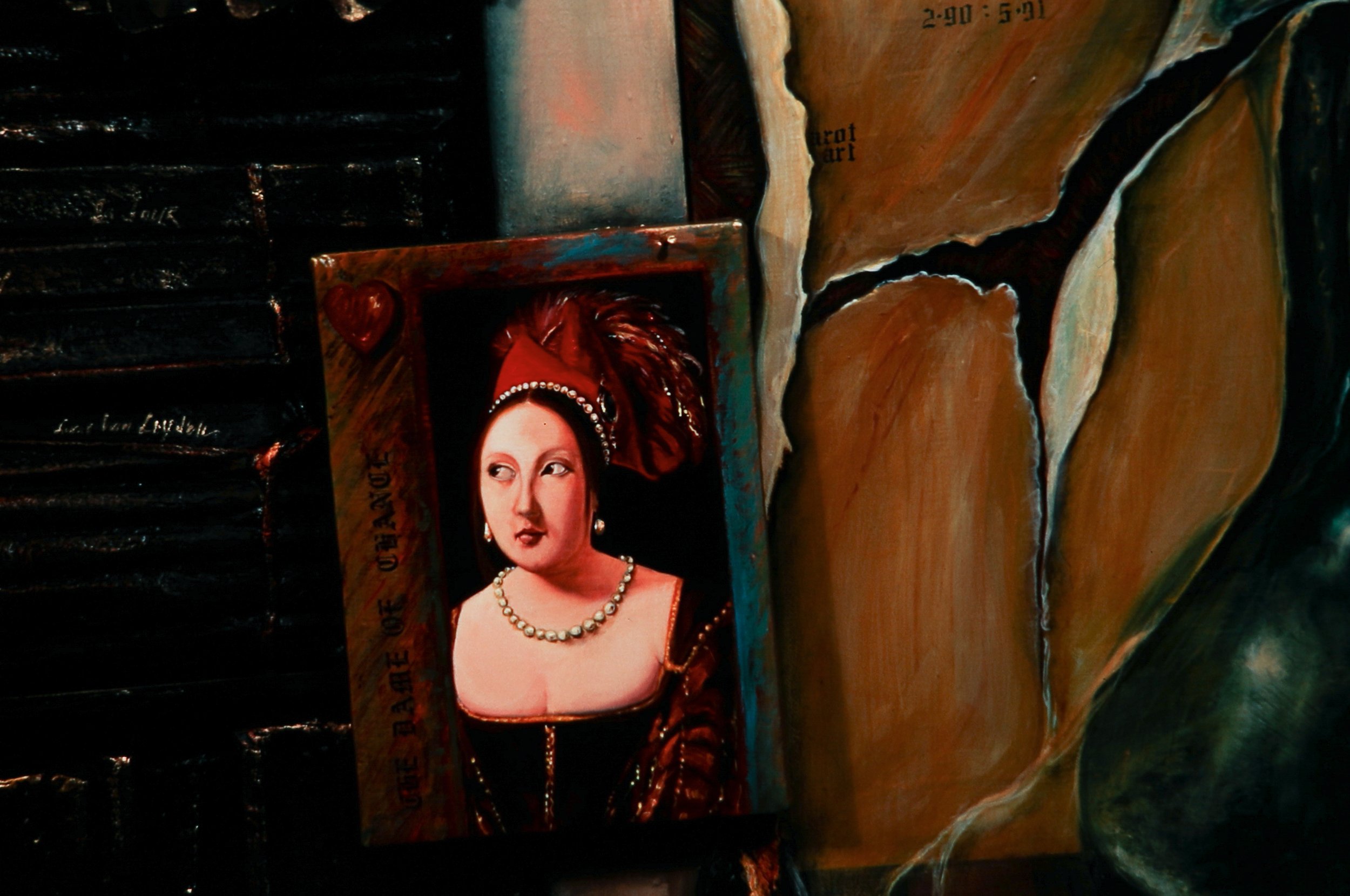Studio Wall Series, 1988-1993
In the Studio Wall Fragment series Lois Polansky focuses on famous images and uses found image as an artistic metaphor; real and handmade elements merge to create a sort of stage for the process of making art. The assemblages, which Polansky refers to as “Wall Books/Book Walls” are presented as though Polansky were framing an actual piece of the wall of her own studio. This series evolved as Polansky completed the 12 unique books in The Weight of Art History series. Polansky explained that “In order to bring a semblance of order to my studio, which was awash in books, magazines, and notes, I started pinning everything up on walls and organizing the material into contextual patterns.”
“As I see it [Polansky] works tantalizingly with the paradox of “looking and seeing.” There is a difference. Polansky gives us a lot to work with, to look at; she dazzles our retinas with myriad surfaces and colors created through her virtuoso mastery of her medium. Polansky understands that we receive true understanding when we see the essential connection between things. …
To cite examples from her [Studio Wall Series], she variously bids us see the connection between an implacable Benin mask and Frida Kahlo’s riveting face. She makes us aware that an incidental piece of cloth in a Gauguin painting anticipated the late art of Matisse. In another work a red turban out of Van Eyck engenders a lavish composition echoing this form.
The dynamics of Polansky’s art have their source in the way she combines an assertiveness that recalls the Avant Garde Russian artists known as “Constructivists” at the beginning of the century, with a poetic intimacy that recalls Joseph Cornell. The “constructed painting” has only recently been defined as a specific genre, but Polansky has long practiced it deftly — and definitely her own way.” -William Zimmer, Summer 1991
“Polansky was stunned to discover there was a very fine line between the reality of the walls and the painted illusions that were hanging on the wall easels. Pondering the issue, she realized that a physical separation had to be made: and that separation took the form of frame. A random act of hanging some fabric over a picture frame inspired the faux paper curtains that drape each tableau creating a proscenium-like arch. All of Polansky’s work is highly theatrical; each piece seems to create a setting with backdrop, stage, and props. These tableaus are about making art that is human and enduring.” - Roberta Balfus, Fiberarts Magazine, Nov/Dec 1992











